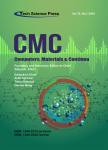Demand-Responsive Transportation Vehicle Routing Optimization Based on Two-Stage Method
作者机构:School of Railway Transportation Shanghai Institute of Technology Shanghai 201418 China
出 版 物:《Computers, Materials and Continua》 (计算机、材料和连续体(英文))
年 卷 期:2024年第81卷第1期
页 面:443-469页
核心收录:
学科分类:08[工学] 0812[工学-计算机科学与技术(可授工学、理学学位)]
主 题:artificial intelligence applications Demand responsive transit genetic algorithm muti-objective optimization
摘 要:Demand-responsive transportation (DRT) is a flexible passenger service designed to enhance road efficiency, reduce peak-hour traffic, and boost passenger satisfaction. However, existing optimization methods for initial passenger requests fall short in addressing real-time passenger needs. Consequently, there is a need to develop real-time DRT route optimization methods that integrate both initial and real-time requests. This paper presents a two-stage, multi-objective optimization model for DRT vehicle scheduling. The first stage involves an initial scheduling model aimed at minimizing vehicle configuration, and operational, and CO2 emission costs while ensuring passenger satisfaction. The second stage develops a real-time scheduling model to minimize additional operational costs, penalties for time window violations, and costs due to rejected passengers, thereby addressing real-time demands. Additionally, an enhanced genetic algorithm based on Non-dominated Sorting Genetic Algorithm-II (NSGA-II) is designed, incorporating multiple crossover points to accelerate convergence and improve solution efficiency. The proposed scheduling model is validated using a real network in Shanghai. Results indicate that real-time scheduling can serve more passengers, and improve vehicle utilization and occupancy rates, with only a minor increase in total operational costs. Compared to the traditional NSGA-II algorithm, the improved version enhances convergence speed by 31.7% and solution speed by 4.8%. The proposed model and algorithm offer both theoretical and practical guidance for real-world DRT scheduling. © 2024 The Authors.



